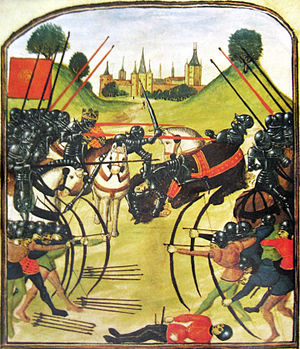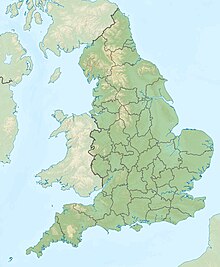This article needs additional citations for verification. (May 2021) |
| Battle of Tewkesbury | |||||||
|---|---|---|---|---|---|---|---|
| Part of the Wars of the Roses | |||||||
 The battle depicted in a Ghent manuscript | |||||||
| |||||||
| Belligerents | |||||||
|
|
| ||||||
| Commanders and leaders | |||||||
| Strength | |||||||
| 5,000–6,000 men[1][2] | Approx. 6,000 men[3][1][2] | ||||||
| Casualties and losses | |||||||
| Unknown | 2,000[4] | ||||||
Location within England | |||||||
The Battle of Tewkesbury, which took place on Saturday 4 May 1471, was one of the most decisive battles of the Wars of the Roses in England.
King Edward IV and his forces loyal to the House of York completely defeated those of the rival House of Lancaster. The Lancastrian heir to the throne, Edward of Westminster, Prince of Wales, and many prominent Lancastrian nobles were killed during the battle or executed. The Lancastrian king, Henry VI, who was a prisoner in the Tower of London, died shortly after the battle, perhaps murdered. Tewkesbury restored political stability to England until the death of Edward IV in 1483.
- ^ a b Gravett 2003, p. 28.
- ^ a b Goodchild 2005, p. 114.
- ^ Warner, p. 96
- ^ Weir, p. 407
